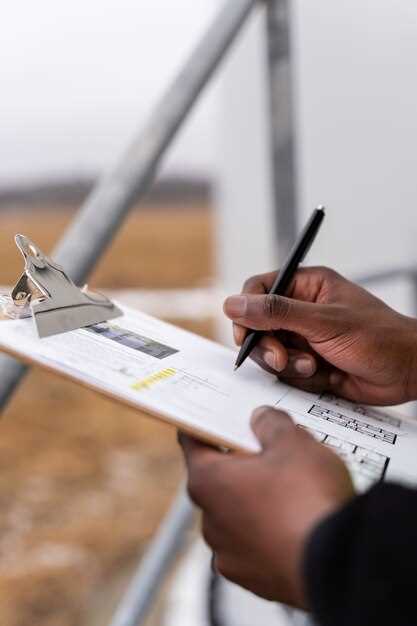
When it comes to ensuring the success of any restoration project, a comprehensive post-restoration inspection checklist is essential. This checklist serves as a crucial control mechanism, allowing project managers to systematically evaluate the outcomes of restoration efforts. By adhering to this structured approach, teams can identify any areas that require further attention, thereby securing the integrity of the restoration work.
The restoration process, whether it pertains to buildings, artworks, or ecological environments, demands meticulous oversight. A thorough inspection not only reviews the physical attributes of the project but also assesses the quality of workmanship and adherence to regulatory standards. Utilizing a well-crafted checklist will facilitate this evaluation, ensuring that every aspect of the restoration is scrutinized.
To effectively implement a post-restoration inspection checklist, it is vital to consider specific criteria tailored to the unique requirements of each project. This includes checking for structural integrity, compliance with restoration guidelines, and overall aesthetic value. A well-organized checklist not only promotes efficiency but also reinforces accountability among team members, fostering a culture of excellence in restoration practices.
Critical Elements to Review in Restoration Projects

In restoration projects, ensuring control and adherence to quality standards is essential. A well-structured checklist can help in the thorough evaluation of critical elements post-restoration. First, it is crucial to assess the integrity of the structure. This includes checking for any signs of damage that may have occurred during the restoration process, ensuring that the foundation is stable, and verifying that the building envelope is intact.
Next, reviewing the materials used during restoration is vital. Confirm that all materials meet the necessary specifications and standards, preventing future degradation. Consider any historical aspects of the original structure while ensuring modern materials adhere to current safety regulations.
Another important element is the functionality of systems such as plumbing, electrical, and HVAC. Ensure that these systems operate effectively and efficiently, as they directly impact the usability of the restored space. A thorough examination should confirm that all installations comply with local codes and industry standards.
Additionally, evaluate the aesthetics of the restoration. This includes verifying that the design aligns with the heritage of the original structure while meeting modern needs. Attention to detail in finishes, paints, and decorative elements should also be considered to maintain visual coherence.
Lastly, a post-restoration inspection should include a review of the surrounding environment, ensuring that landscaping and external features complement the restoration. Consideration of water drainage, erosion control, and accessibility are also vital to the project’s overall success.
In summary, a comprehensive checklist focusing on structure, materials, operational systems, aesthetics, and environmental factors is essential in effectively reviewing restoration projects. This ensures that the goals of the restoration are met while maintaining control over quality outcomes.
Step-by-Step Quality Control Procedures for Inspections
Establishing a robust quality control procedure during restoration projects is vital for ensuring that all aspects of the work meet the required standards. Here is a step-by-step guide to effectively carry out quality control inspections.
1. Preparation: Before the inspection, gather all relevant documentation, including project plans, previous inspection reports, and quality standards specific to the restoration work. Ensure that all team members involved in the inspection are informed and prepared.
2. Initial Assessment: Conduct a preliminary walkthrough of the entire site to identify areas that may require additional attention. This will provide a preliminary understanding of the restoration quality and overall project status.
3. Checklists Development: Create detailed checklists that outline specific quality criteria for various components of the restoration project. This ensures that no aspect is overlooked and aids in maintaining consistent inspection processes.
4. Detailed Inspection: Perform the inspection by systematically evaluating each section of the restoration project against the established checklists. Note any inconsistencies, deficiencies, or areas of concern that fall short of quality standards.
5. Documentation: Record all findings meticulously in inspection reports. Include photos, descriptions of issues identified, and any immediate corrective actions taken. Clear documentation ensures transparency and accountability in quality control processes.
6. Communication: Discuss the inspection results with the restoration team and stakeholders. Clear communication of identified issues allows for prompt resolution and reinforces the importance of quality control in the restoration process.
7. Action Plan: Develop an action plan outlining the steps required to address the deficiencies found during the inspection. Assign responsibilities to team members for remedial actions and set deadlines for completing these tasks.
8. Follow-up Inspection: Schedule follow-up inspections to ensure that corrective actions have been implemented effectively. This step is crucial for validating that the identified quality issues have been resolved satisfactorily.
9. Final Review: Conduct a final review once all rectifications have been made. Confirm that the restoration project meets all required quality standards before concluding the work.
10. Feedback and Continuous Improvement: Post-inspection, gather feedback from all team members involved in the quality control process. Analyze the effectiveness of the inspection and identify areas for improvement for future restoration projects.
Documentation Requirements for Successful Project Closure

Effective project closure is critical to ensuring the quality and sustainability of restoration efforts. A comprehensive documentation process is essential for creating a final record that accurately reflects project outcomes and compliance with established standards. This documentation serves as a reference for future projects and helps in validating the success of restoration initiatives.
A detailed checklist should be developed to ensure all required documents are collected and reviewed. Key items to include in this checklist are project plans, contracts, change orders, and any correspondence that occurred throughout the project. Additionally, it is vital to keep records of all inspections, tests, and approvals that were executed during the restoration process.
Another critical component of project closure documentation is the final report. This report should summarize the project’s objectives, methodologies, outcomes, and any lessons learned. It should also address any discrepancies that occurred during execution and how they were managed. Including feedback from stakeholders can enhance the report’s value and provide insights for future projects.
Furthermore, maintenance guidelines and warranty information for any restored assets must be documented and conveyed to the appropriate parties. This ensures that the quality of the restoration is maintained and that all involved understand how to care for the improvements made.
Lastly, archiving all relevant documents in a structured format is recommended for future reference. This practice not only aids in knowledge retention but also supports compliance with regulatory requirements. By adhering to these documentation requirements, project teams can facilitate a smooth and successful project closure, paving the way for ongoing restoration quality in subsequent initiatives.




